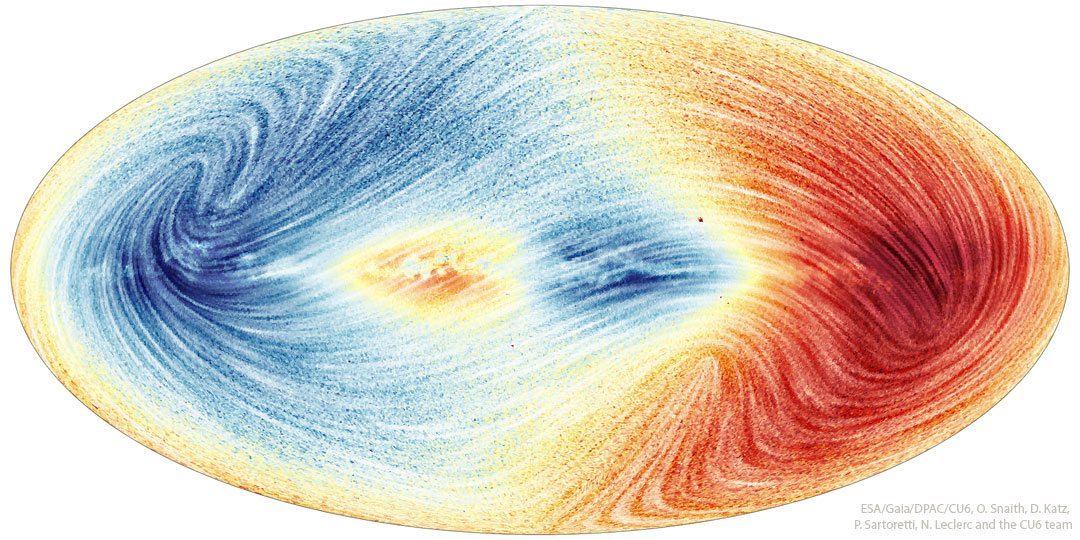2022年7月6日
Milky Way Motion in 3D from Gaia
Credit & License: ESA, Gaia, DPAC; Text: Ata Sarajedini (Florida Atlantic U., Astronomy Minute podcast)
Explanation: Our sky is alive with the streams of stars. The motions of 26 million Milky Way stars are evident in the featured map constructed from recent data taken by ESA’s Gaia satellite. Stars colored blue are moving toward us, while red indicates away. Lines depict the motion of the stars across the sky. The large blue on the left and red areas on the map’s right give the overall impression that stars in the Milky Way are rotating around the center. However, there is a region near the middle — caused by our own Sun’s motion relative to a rigidly-rotating central Galactic bar — that seems to reverse it. Understanding details about the motion of stars is helping humanity to better understand the complex history of our Milky Way galaxy and the origin of our Sun.
Tomorrow’s picture: open space
盖亚卫星:银河系在三维空间的运动
图片提供与授权: ESA, Gaia, DPAC; 文稿: Ata Sarajedini (Florida Atlantic U., Astronomy Minute podcast)
说明: 我们的天空到处都是恒星流。在这幅建构自欧洲航天局盖亚卫星最新观测数据的主题星图里,2亿6千万颗银河系恒星的运动清楚可辨。其中,泛蓝的恒星正移向我们,泛红的恒星则是远离。而线形的迹线描绘出恒星在天空的运动。星图左侧的大片蓝色区域和右侧的红色区,给人的整体印像为银河系里的恒星皆绕着银河中心运动。然而,因为我们的太阳相对于几乎刚性旋转的银河中央棒运动之故,中间附近的区域之运动取向,看似与整体恒星的运动相反。理解恒星运动的细节,有助于人类更深入了解银河系的复杂历史和我们的太阳之起源。
明日的图片: open space



